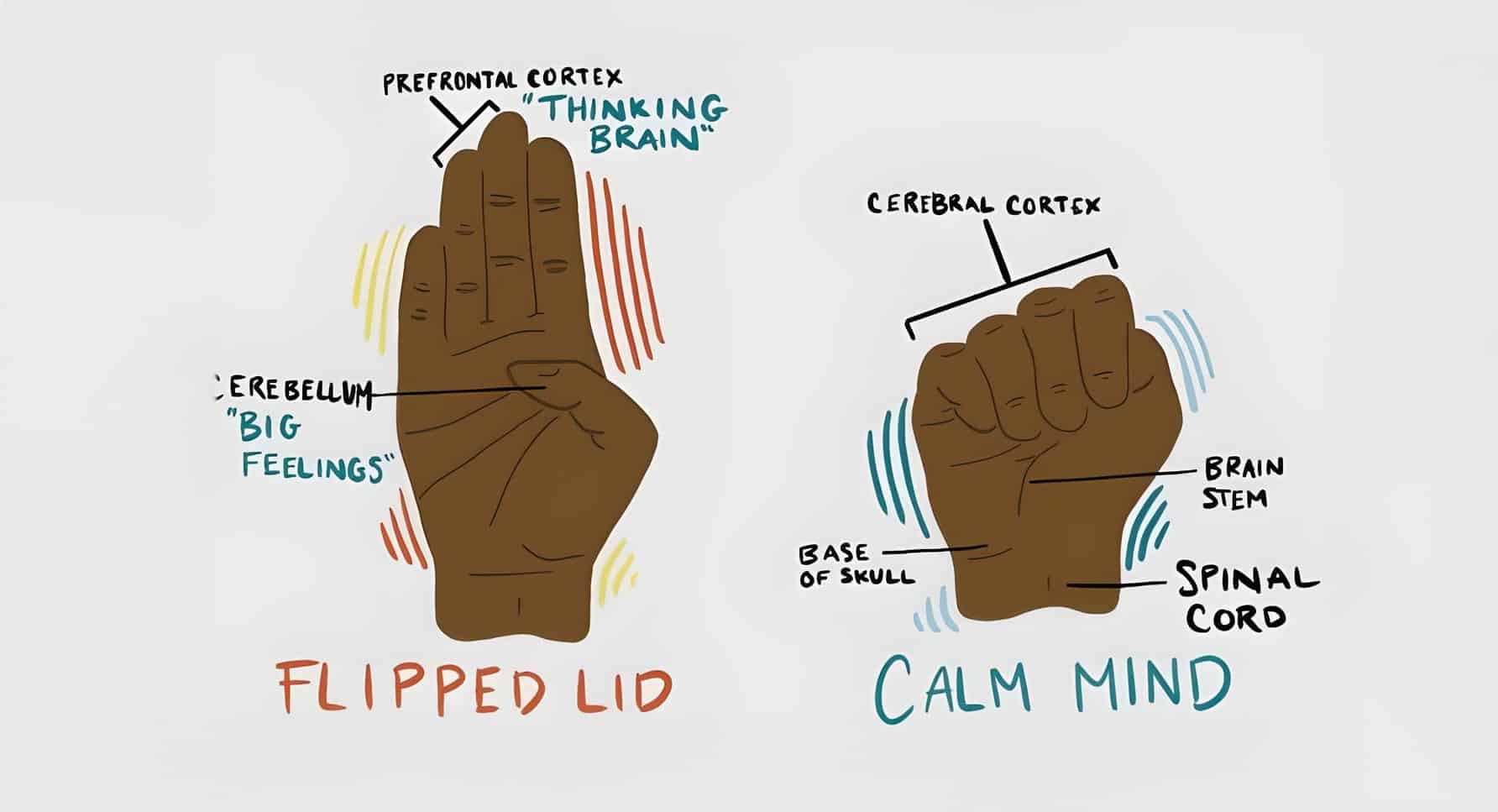
Emotional regulation is one of the cornerstones of emotional intelligence, and yet it can feel abstract or difficult to grasp in the heat of the moment. Fortunately, there’s a simple, visual, and memorable analogy that helps us understand how the brain responds to stress: The Hand Model of the Brain by Dr. Dan Siegel.
This model shows us what happens neurologically when emotions run high — and how to regain control using awareness and intention.
🖐️ Visualising the Brain with Your Hand
To understand this concept, make a fist with your thumb tucked inside your fingers. Your hand now represents the major structures of your brain:
-
Wrist and palm = Brain stem (your survival system — fight, flight, freeze)
-
Thumb tucked inside = Limbic system (your emotional brain — where fear, anger, sadness, joy, and memory live)
-
Fingers curled over the thumb = Prefrontal cortex (your thinking brain — responsible for reasoning, decision-making, self-awareness, and regulation)
When your fingers (the prefrontal cortex) are wrapped calmly over your thumb (your emotional brain), all parts of your brain are integrated. You’re in control. You can:
-
Think rationally
-
Listen actively
-
Express yourself clearly
-
Make considered decisions
This is your calm, connected state — your emotionally intelligent state.
“Flipping Your Lid” — When Emotions Take Over
Now, imagine flinging your fingers open, exposing your thumb.
This represents what happens when you flip your lid in a moment of emotional overwhelm.
In this state:
-
The prefrontal cortex disconnects
-
The limbic system takes over
-
You’re no longer thinking — you’re reacting
This is the fight, flight, or freeze response in action. You might:
-
Yell or snap at someone
-
Shut down emotionally
-
Feel panicked or frozen
-
Say or do things you later regret
These are automatic reactions, not thoughtful responses.
Regaining Control: The Power of Emotional Regulation
Emotional intelligence isn’t about never getting triggered — it’s about knowing how to respond once you do. The key is learning to bring your fingers (thinking brain) back over your thumb (emotional brain).
Here’s how:
1. Notice the Trigger
Catch yourself in the moment. This requires self-awareness. You might notice:
-
A surge of heat or tightness in your chest
-
Your heart racing or jaw clenching
-
The urge to interrupt, lash out, withdraw, or shut down
🧠 TIP: The earlier you notice, the easier it is to regulate.
2. Pause and Breathe
Breathing interrupts the stress response. Just 3–5 slow, deep breaths can begin to calm the nervous system and reconnect your thinking brain.
Try this:
Inhale for 4 counts → Hold for 4 → Exhale for 6
Repeat 3–5 times
3. Name the Emotion
Label what you’re feeling. Naming an emotion activates the prefrontal cortex and helps the brain process rather than suppress.
For example:
-
“I’m feeling frustrated.”
-
“I notice I’m anxious right now.”
-
“There’s anger coming up.”
Remember: You can’t change what you don’t acknowledge.
4. Choose a Thoughtful Response
Once calm, ask yourself:
-
“What outcome do I want here?”
-
“How can I express this constructively?”
-
“What would a regulated version of me do?”
Emotional regulation means choosing intention over impulse.
✍️ Reflection :
“Can you think of a recent time when you ‘flipped your lid’?
What triggered it, and how might you respond differently next time using the hand model?”
